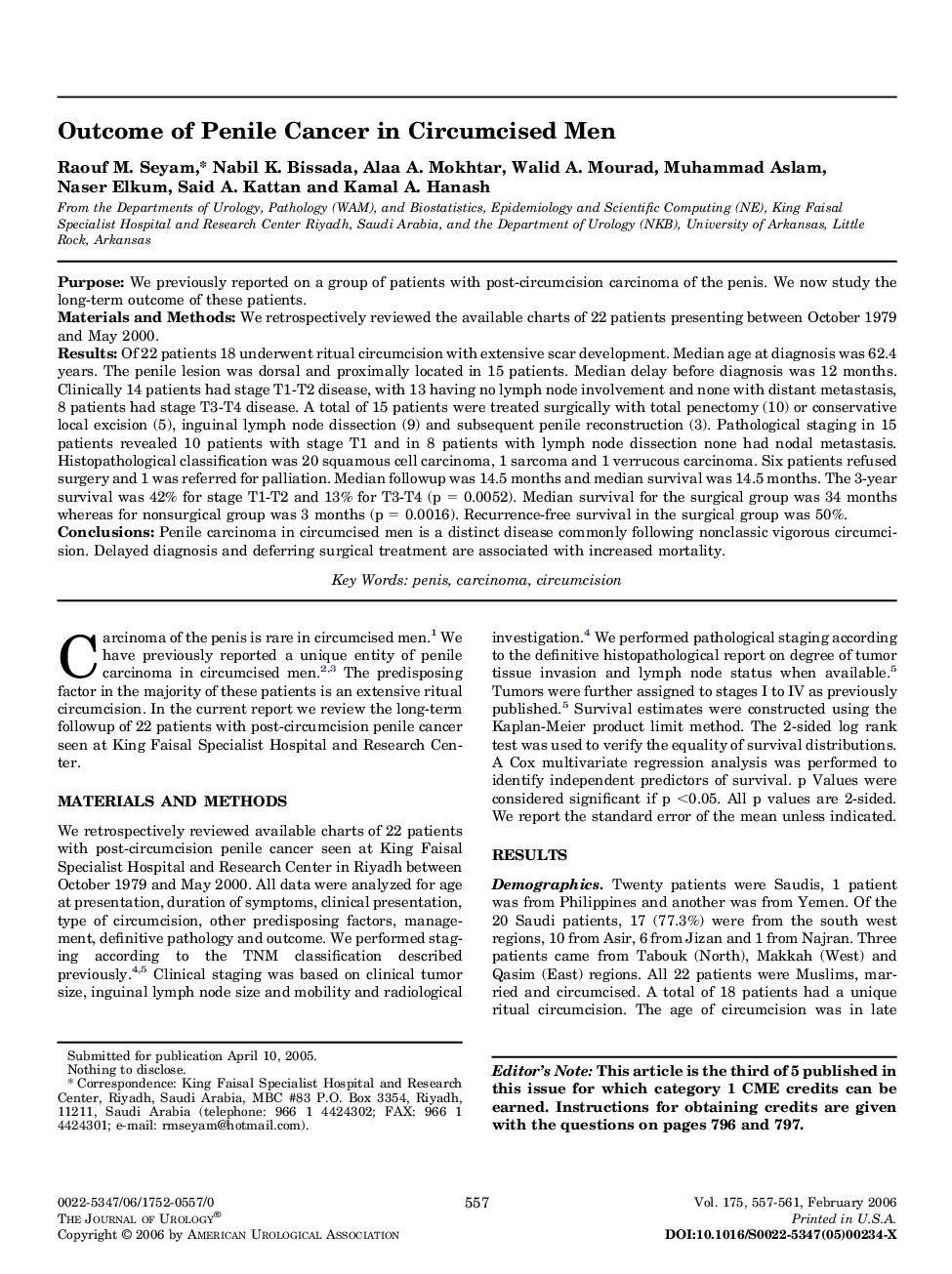| Article ID | Journal | Published Year | Pages | File Type |
|---|---|---|---|---|
| 3878080 | The Journal of Urology | 2006 | 5 Pages |
PurposeWe previously reported on a group of patients with post-circumcision carcinoma of the penis. We now study the long-term outcome of these patients.Materials and MethodsWe retrospectively reviewed the available charts of 22 patients presenting between October 1979 and May 2000.ResultsOf 22 patients 18 underwent ritual circumcision with extensive scar development. Median age at diagnosis was 62.4 years. The penile lesion was dorsal and proximally located in 15 patients. Median delay before diagnosis was 12 months. Clinically 14 patients had stage T1-T2 disease, with 13 having no lymph node involvement and none with distant metastasis, 8 patients had stage T3-T4 disease. A total of 15 patients were treated surgically with total penectomy (10) or conservative local excision (5), inguinal lymph node dissection (9) and subsequent penile reconstruction (3). Pathological staging in 15 patients revealed 10 patients with stage T1 and in 8 patients with lymph node dissection none had nodal metastasis. Histopathological classification was 20 squamous cell carcinoma, 1 sarcoma and 1 verrucous carcinoma. Six patients refused surgery and 1 was referred for palliation. Median followup was 14.5 months and median survival was 14.5 months. The 3-year survival was 42% for stage T1-T2 and 13% for T3-T4 (p = 0.0052). Median survival for the surgical group was 34 months whereas for nonsurgical group was 3 months (p = 0.0016). Recurrence-free survival in the surgical group was 50%.ConclusionsPenile carcinoma in circumcised men is a distinct disease commonly following nonclassic vigorous circumcision. Delayed diagnosis and deferring surgical treatment are associated with increased mortality.
